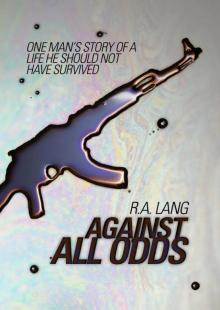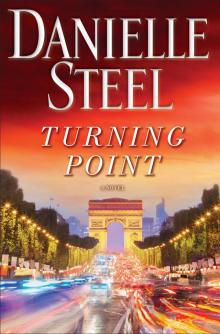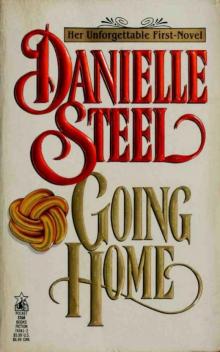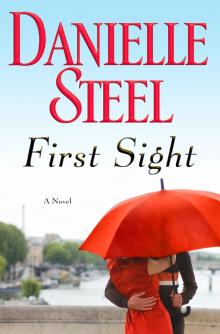- Home
- Danielle Steel
A Gift of Hope: Helping the Homeless Page 6
A Gift of Hope: Helping the Homeless Read online
Page 6
In San Francisco, a statute of the health code called a 5150 allows you to hospitalize persons exhibiting inappropriate or bizarre behavior for seventy-two hours for evaluation. That gives mental health professionals three days to study their behavior and make a decision as to whether or not they are a danger to themselves or others. If not, it is nearly impossible to extend the three days for a longer period (with the help of a 5250). But sometimes it takes longer than three days to assess a psychiatric problem. And it seems to me that it’s not enough time to determine if they are indeed a danger to themselves or others. And what if others are a danger to them? We can’t hospitalize these people to protect them, no matter how vulnerable their state or confused their mind. As long as they are not “dangerous,” they are free to go, back to a world where they are preyed upon, in constant danger, and in no condition to cope with the rigors of street life or the constant threats lurking there. Sometimes, no matter how sad, that decision should be taken out of their hands.
Homelessness is not just about not having a job or an apartment. Too often homelessness is due to a disordered mind. It’s more obvious in some cases than others, and some people are less able to comply with society’s rules than others. But in far too many cases, the mentally ill are falling through the cracks and have nowhere to go. You see them pushing their carts as they talk to themselves, sleeping in doorways, living in cardboard boxes, soaking wet and freezing cold. They are no danger to you, perhaps, but they are unable to help themselves. And those of us who so desperately want to take care of them, family or others, have no way to reach out to them, get help, or bring them home. I think it is one of society’s greatest problems today, an urban problem that is out of control, and our existing laws are doing nothing to help us stem the tide.
In this instance, laws that protect a few are hurting many, many more. It hurts to put someone in a mental hospital. I know. I’ve done it. But it hurts far, far more to see them flounder on the street, and perhaps watch them die there when they wouldn’t otherwise. Simply put, we need better, more efficient laws to help solve the problem. And the reality is that even many who seem functional at first glance really aren’t.
I believe only a tiny fraction of people are on the streets because of slim savings, mismanaged funds, or the loss of a job. Most of the homeless are there because they cannot function in our society, and are too disabled in some way to access the help they need. They are lost out there on their own. It’s up to us to find them and do something to help. Like drowning people, they can’t save themselves. If they are to be saved, it’s up to us, the functioning members of society, to do it. If they were capable of doing it, they wouldn’t be out there. So what do we do now? Turn our backs and let them drown, or do something about it? I hope that our communal answer will be to reach out a hand and help in any way we can, large or small. And in time, our legislators need to address the issues by providing better laws to allow us to help them.
Homelessness is not one of the “sexy” or appealing causes that make people rush forward to help. For the most part, the homeless are not adorable, appealing children with sunny smiles. They are tired and broken, they have lost teeth and arms and legs from festering wounds. They smell bad, they need a bath. They frighten us, not just in their appearance or behavior, but because if we look at them more closely, we cannot help but fear that something similar could happen to us or someone we love. But just as much as any of our friends or relatives, they desperately need our help. Like most children, they cannot find their way back by themselves. We have to help.
FIVE
The Clients:
Who Are They?
Although it’s not unusual for me to forget the name or face of someone I meet at a dinner party, I rarely forgot a face I saw on the street. Some of them I saw time and time again, others I saw once and then they disappeared forever. I always wondered what happened to them. Did they move on to another city? Did they go to a shelter? Had family members claimed them and convinced them to come home? Did they go to jail? Or did they die? I heard of deaths on the streets often. Whatever happened to them, there are faces I will remember forever, even though I will never know their stories. I never, ever asked them how they got to the streets. I felt I owed them that respect. And street etiquette and simple decency forbade it.
The woman I saw most often is the one I mentioned earlier, who began her life on the streets in a blue flowered silk dress and a string of pearls and ended up in a wheelchair, missing all her teeth and one leg. Yet she was always cheerful, polite, kind, and grateful for our kindness and anything we gave her. She was a bright woman, and I know she had children somewhere. She mentioned them, and as in the case of many women on the streets, her children were with her mother. (In other cases women on the streets have children in foster care.)
One of the people I met on one of my first trips was a man who popped out of a Dumpster, like a genie out of a bottle. At another time and place, he would have scared the life out of me, and I have to admit, even that night he frightened me a little. His hair was a tangle of dreads and his face was streaked with dirt, he was filthy, and his eyes were wild. Trying to maintain my composure, I explained to him what I had to offer him, and he nodded, standing in the Dumpster. I ran to the van to get him a sleeping bag and jacket, after he told me what size he was. With them, I handed him a hat, socks, and gloves. All of it disappeared into the bowels of the Dumpster where he was living. And being very small, I couldn’t see into it. I was just walking away, when I heard his voice shout out behind me: “How do I look?” I turned to see him beaming at me, in the same extreme state of disarray, but he had added to it the clean, warm jacket. I think on that trip the jackets we gave out were pale gray. (We always took whatever colors we could get in volume. For obvious reasons, we preferred darker colors, but couldn’t always get them.) As I turned to look at him, I had never seen a smile so wide and proud. He was absolutely exploding with joy. The tenderness of the moment brought tears to my eyes, as I smiled back at him. Along with a warm jacket, we had somehow given him back humanity and pride.
“You look beautiful!” I shouted back at him and meant it, and his smile widened.
“Thank you!” he said. No one had touched my heart as he did at that moment. I still think of him often, and privately call him “How do I look?” to identify him when we talk about him. He looked so happy, and it was an infinitely precious moment. As I waved again and walked back to the van, he shouted “God bless you!” and vanished into the Dumpster. I never saw him again, but like so many others, I will remember him always.
Another woman I saw only once was pushing a shopping cart at midnight, near San Francisco’s civic center. At one time, there was a tent city there, which was disbanded by the DPW. Afterward, people camped in doorways and on steps, in clusters of cardboard boxes, especially for the night. She was a large woman, pushing her cart with a measured step and a dignified walk, and for some crazy reason, she reminded me of English nannies I had seen pushing prams around the park in my childhood. Everything she owned was in that cart, stacked high but in meticulous order. It was one of our last trips before Christmas. We approached her, told her what we had. As we spoke, I noticed that she had done her hair in little ponytails and knots all over her head. And from each tiny tail and knot she had hung a silver Christmas ball. She was a bit like a human Christmas tree, or one of those holiday cards showing a reindeer with Christmas balls hanging from its antlers. It sounds crazy, but I loved it. Holidays are seldom acknowledged on the street. And my heart ached each time I said, “Happy Thanksgiving” or “Merry Christmas.” Just saying it seemed like an affront to people so intent on the business of living and survival. Happy? Merry? Ugh. How insulting is that, in the circumstances they’re in? Sometimes I just couldn’t bring myself to say it. But the woman with a head full of silver Christmas balls had clearly decided to pay homage to the season.
As we handed her the things we were giving her, she looked me in the eye with a s
erious sense of purpose. She didn’t smile as she glanced at me intently. “My name is Brenda,” she said clearly. “Please don’t forget me.” “I won’t,” I promised, wondering how many people had forgotten her, wherever she came from. “I promise,” I said out loud. And I never have. Each time I drive by there, I think of Brenda with her proud walk and noble stance, with the silver ornaments in her hair. I will never forget Brenda. How could I?
Similarly, we found many of our clients outside the bus station, lined up in the shelter of an overhang, safer than most because of bright lights that allowed no one to sneak up on them. It was a place where we did a lot of business. It rapidly became one of our regular stops. And one night, in the midst of the controlled chaos of handing bags with contents in three sizes out of three vans, a man walked up to me quietly, looked at me intently, and said, “My name is Jerry. Will you pray for me?” I thought he meant right then, and I would have if he wanted. We had never done that before, but no one had ever asked. “Now?” I asked quietly, honored that he should ask. “No.” He shook his head, his eyes never leaving mine, “Later … after you go … pray for Jerry.” I have now for years. His name is carved into my mind. The promise was real.
A woman who tore my heart out crossed our path in our first year. She was young and blond and pretty, maybe in her early twenties. It was the first time I learned what a crib was. In her case, it was a well-constructed shelter made of boxes carefully fit together, propped between two pillars of an overpass. She emerged from her boxes, shivering in the cold, and I correctly guessed her to be six months pregnant. I was deeply concerned for her and we talked about her pregnancy. She said she was getting prenatal care from time to time, though not on a regular basis. And what we had to give her seemed so inadequate, living on the streets in her condition. She said she was living alone, then added that this was her third baby. She said that when she gave birth, the social services took the babies, and then she returned to the streets. She said it with tears in her eyes, but a plucky tilt to her chin. I didn’t dare ask her where her family was, if they would help her, or how all this had happened. But she kept my stomach churning after I left her that night. How could she go through all that and then give up her baby? But what would happen to an infant on the streets, living as she did? It made me think of women in war zones, whom you see on TV, or in ravaged countries. And here this was, happening in our backyard, in an allegedly civilized city. Later I learned of one government agency and a group of private volunteers who provide prenatal care to the homeless, and I have referred many women to them. But I did not know of them then.
We saw her regularly over the next months, as she got closer to having the baby. It was spring by then. She never complained, she was just grateful for what we gave her. She would take what we offered and disappear into her little cardboard box. She had no one with her, no one to help her. And then one day, when we came back to find her, her crib was gone—“crib” being an appropriate word in her case. The cardboard was folded and lying on the street. I could only assume that the baby had come, and I had no idea where she was. I never saw her again, and have no notion of where she is now. The saddest thing, in all of these cases, particularly with older people you see on the streets, is that when they vanish, you have no idea if their condition is better or worse. You have no idea if they’ve gone inside, moved away, are sick somewhere, or have died. All of these people who have carved their faces into my heart and memory may no longer be alive. And yet they live on in my head. Brenda, Jerry … “How do I look?” … the young pregnant mother … the girl in the wheelchair with one leg who once wore pearls … They are embedded in my soul and my memories.
Another man who made a deep impression lined up behind our vans when we pulled up at the public library. We had to be careful in that location, because sometimes there were large numbers of people, as many as forty or fifty. It was also a short distance from Market Street, where we knew drug deals went down. Once people heard that we’d arrived, once they knew about us, they’d flock to us in droves. And if we ran out of supplies, we could be in real danger and deep trouble. Aside from that, I hated disappointing anyone out there; that’s not why we were there. But we also had to consider the risks. And running out of supplies among desperate people, particularly if there were drugs involved, could have been very dangerous for us. So we were careful where we stopped, and how many people were around, and that we had enough supplies on hand.
But on that particular night, it seemed quiet at the library. There were about thirty people lined up behind the van. There was a homeless young skateboarder doing flips and tricks on the library steps, and he came back and forth to chat with us, as others stood waiting peacefully. It was all men that night. And I noticed a man far back in the line, in a business suit, white shirt, and tie, and immediately frowned disapproval. I was afraid he was just there to get something free, and he wasn’t homeless. I said something to one of my co-workers, asking what he was doing in the line, and my colleague said that he was okay, he had seen him come out of a sleeping bag on the library steps.
Every now and then, as we worked in less ravaged neighborhoods, people would approach with curiosity. When they saw what we were doing, they sometimes said something kind to us. And only a handful over all those years tried to take advantage of an opportunity for something free, although they weren’t homeless. I suspected the man in the suit of that. The information that he’d been sleeping on the library steps reassured me, but we had never come across anyone like him on the streets. Some of the people we dealt with were still surprisingly clean, like a few young men who were homeless but trying to get jobs, who kept their hair combed and their faces well shaven, and wore clean running shoes for a while (they get dirty quickly). But no one had ever shown up in a suit and tie. I was more than startled.
I hung around the back of the van to get a better look at him as he approached, and finally he was next in line for our supplies. He met my eyes, and I smiled at him. No way was I going to say “What are you doing here?” but he volunteered his own story, which was extremely rare on the streets. What shocked me most was not only was he wearing a good-looking dark-gray striped business suit, a clean white shirt, and a sober tie he had loosened, but his shoes were polished. He wore rimless glasses and had a good haircut. I guessed him to be in his late fifties. He looked like my banker, anyone’s stockbroker, or some of my friends. I would never in a hundred million years have guessed that he was homeless. If you had introduced me to him and said that to me, I wouldn’t have believed you. How could this be?
He never gave his name, although some people do as though to make a mark of some kind and be remembered. He said that he had been an executive in Silicon Valley and his wife had left him not long before. They were vastly overextended and heavily in debt, he had lost everything and then lost his job. He was trying to find employment in his field, and no one knew he was homeless, not even his family. He hung around and talked to us for a while, hungry for conversation.
For whatever reason, he had decided not to go to a shelter—scared maybe, with good reason. Shelters are dangerous enough for people who don’t look like him. And he would have stuck out like a sore thumb and been an instant target. Eventually, we had to go, and we watched him walk slowly up the library steps with what we’d given him. He had been extremely grateful, and before he left us, we wished him good luck finding a job. But he had shaken us all. With many of the homeless people we saw, it was hard to find the bridge between us other than our common humanity. We could no longer see where they came from, and we met them only with compassion. But this man had the kind of story that strikes fear in people’s hearts. A series of mistakes, some bad luck, too much spending, a broken marriage, a lost job at the wrong time. It happens to many, although they are the most likely to get off the streets again, as long as drugs and alcohol aren’t involved. Thinking about him, we were all silent on the way home. He was God’s Last-Stop Curve Ball that night.
Another
pair I always remember with a smile were most likely teenagers, somewhere between sixteen and eighteen, although they looked fairly adult. It was very rare for us to see adolescents, and never children. Homeless children are almost instantly picked up by the police and taken to shelters, hopefully with their parents. In eleven years I never saw a child on the streets—many pregnant bellies, but never an infant or a child. Ever. And I’d say teenagers (in groups of two or three, and rarely but occasionally a camp of as many as eight or ten) were five to every six hundred adults. They tended not to hang out in the same places as adults, and kept to themselves. In San Francisco, they were mostly in an area called the Panhandle, which was too dangerous for us, climbing through shrubbery and bushes in the dark.
Also, many kids on the streets had the reputation for doing drugs. They were more likely to sell what we gave them than adults. We saw our clients put their new clothes on immediately and we knew they didn’t sell them. There were plenty of drugs among the adults, but rarely did they sell the supplies we handed out. Their need was too great, their gratitude evident as we watched them dive into the bags and put on the jackets immediately. And as I drove around the city between trips, leading my own life, I so often saw the familiar black bags that we used to hold the supplies we gave perched atop shopping carts, their prized possession—so I knew these bags were not being sold.

 All That Glitters
All That Glitters Nine Lives
Nine Lives Silent Night
Silent Night Royal
Royal Beauchamp Hall
Beauchamp Hall Daddy's Girls
Daddy's Girls The Dark Side
The Dark Side Blessing in Disguise
Blessing in Disguise The Butler
The Butler Neighbors
Neighbors The Wedding Dress
The Wedding Dress The Affair
The Affair Lost and Found
Lost and Found Child's Play
Child's Play Leap of Faith
Leap of Faith His Bright Light
His Bright Light Mixed Blessings
Mixed Blessings The Numbers Game
The Numbers Game A Gift of Hope: Helping the Homeless
A Gift of Hope: Helping the Homeless Amazing Grace
Amazing Grace Pure Joy
Pure Joy Against All Odds
Against All Odds Sunset in St. Tropez
Sunset in St. Tropez The Ghost
The Ghost Passion's Promise
Passion's Promise Thurston House
Thurston House Matters of the Heart
Matters of the Heart Turning Point
Turning Point Message from Nam
Message from Nam Kaleidoscope
Kaleidoscope The Duchess
The Duchess Past Perfect
Past Perfect The Wedding
The Wedding The Cottage
The Cottage Fall from Grace
Fall from Grace Property of a Noblewoman
Property of a Noblewoman Hotel Vendome (2011)
Hotel Vendome (2011) Toxic Bachelors
Toxic Bachelors Crossings
Crossings Bittersweet
Bittersweet Friends Forever
Friends Forever Family Ties
Family Ties Five Days in Paris
Five Days in Paris The Kiss
The Kiss Daddy
Daddy Vanished
Vanished Safe Harbour
Safe Harbour Rushing Waters
Rushing Waters Miracle
Miracle Palomino
Palomino Now and Forever
Now and Forever Prodigal Son: A Novel
Prodigal Son: A Novel Going Home
Going Home Heartbeat
Heartbeat Ransom
Ransom Fine Things
Fine Things First Sight
First Sight Big Girl: A Novel
Big Girl: A Novel Finding Ashley
Finding Ashley Lone Eagle
Lone Eagle Coming Out
Coming Out Winners
Winners A Good Woman
A Good Woman Dangerous Games
Dangerous Games One Day at a Time
One Day at a Time Dating Game
Dating Game Blue
Blue Granny Dan
Granny Dan The Sins of the Mother
The Sins of the Mother Happy Birthday: A Novel
Happy Birthday: A Novel The Gift
The Gift Summer’s End
Summer’s End The Mistress
The Mistress A Perfect Life: A Novel
A Perfect Life: A Novel 44 Charles Street
44 Charles Street Zoya
Zoya Family Album
Family Album Rogue
Rogue Accidental Heroes
Accidental Heroes Malice
Malice Echoes
Echoes Until the End of Time: A Novel
Until the End of Time: A Novel Betrayal
Betrayal Prodigal Son
Prodigal Son Country
Country Hotel Vendome
Hotel Vendome Impossible
Impossible Remembrance
Remembrance H.R.H.
H.R.H. In His Father's Footsteps
In His Father's Footsteps The Right Time
The Right Time Bungalow 2
Bungalow 2 The Cast
The Cast Wings
Wings Southern Lights
Southern Lights Lightning
Lightning The Apartment
The Apartment Big Girl
Big Girl The House on Hope Street
The House on Hope Street Second Chance
Second Chance Legacy: A Novel
Legacy: A Novel Sisters
Sisters The Ranch
The Ranch Silent Honor
Silent Honor The Good Fight
The Good Fight Betrayal (2012)
Betrayal (2012) Pegasus: A Novel
Pegasus: A Novel